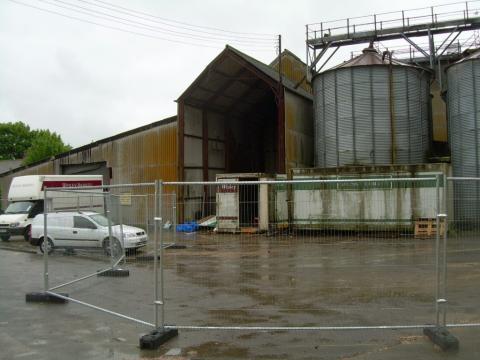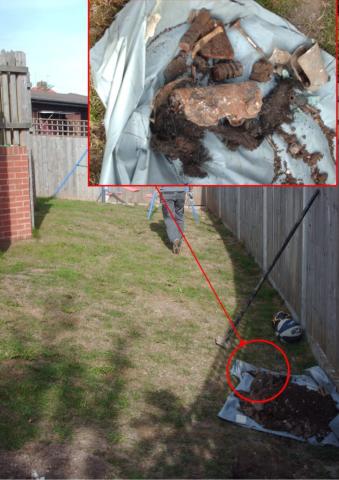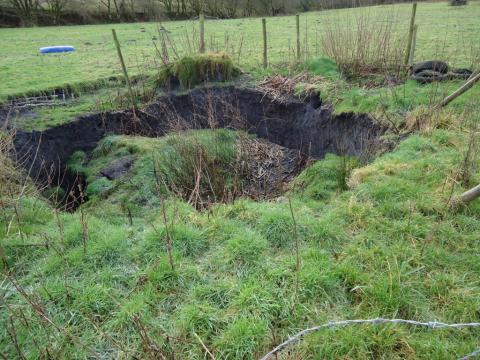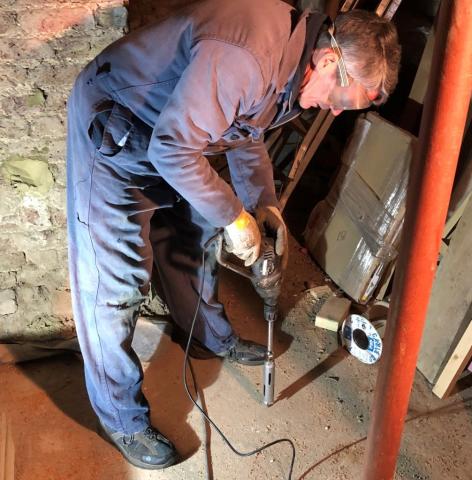Environment Agency update on Land Contamination Risk Management (LCRM) guidance
A major update was planned but due to Covid 19 has been delayed. We have received the following email:
MESSAGE FROM ENVIRONMENT AGENCY – PLEASE SHARE. Unfortunately I am not able to answer any specific follow on questions and cannot give a precise publication date as the publishing lead within the EA has to prioritise coronavirus work.
Dear All
In June 2019, the Environment Agency (EA) published an update to the Model procedures for the management of land contamination (CLR11).
Following the feedback, the EA were due to republish the revised Land contamination: risk management (LCRM) in early 2020.
Given the current coronavirus situation, the EA have decided not to republish a major update. The time is not right.
Interim update
The EA are however, going to publish an interim update. This includes:
1. Updated text on the requirements for MCERTS.
2. Additional text on the use of in situ testing and rapid measurement techniques (RMTs).
The change to the MCERTS text clarifies that it is only required by the EA on sites that they regulate.
The text on RMTs is not new. It is a part of the MCERTS guidance and in a former position statement and in situ testing is briefly mentioned in CLR11. The EA has updated this text to make it clear these tests subject to meeting other requirements, can be used.
The current coronavirus situation is one of the reasons for publishing the interim update. The use of in situ testing and RMTs may help relieve the pressure from laboratories affected by the current situation.
The EA will publish the interim update as soon as the GOV.UK publishing resource is available.

Sub-Surface Data to Support Housing & Planning
The Geospatial Commission (that’s nothing to do with Star Trek or Jedi) has brought together a collection of fifty housing, land and planning open data-sets to make data easier to find. The aim is to add further data-sets over time.
“The Geospatial Commission has identified over 300 datasets that are used during the housing and planning process. They come from a variety of sources, with a variety of licences, and not all of them are open. We have brought them together for the first time in support of our wider Housing and Planning Programme, and today we are publishing a list of 50, 49 of which are covered by OGL. In the coming weeks, we will add further datasets to this list, which will help those looking to understand what data is available, and how it can be accessed.
Of the 300 we have identified, the British Geological Survey is the largest data provider with 49 datasets, followed by local authorities providing 42 datasets. Half of the data sources are published under the OGL, with many of the datasets being found on data.gov”
It should be noted that some may be viewed but not used commercially. Details may be found here.
London Plan “deeply disappointing” says government
There is an excellent summary of the government’s response to the ‘intend to publish’ London Plan on the Pinsent Mason website
“The UK government has directed that significant amendments be made to the new London Plan, citing “deeply disappointing” progress on delivering much-needed housing stock. …”
It’s difficult at the moment to think about life after Covid-19 and no one knows how quickly the economy will recover but here is a reminder that at some point the need for more housing will return to the fore.
The Government is Launching a National Brownfield Map
On 12 March 2020 the Government published a policy document entitled ‘Planning for the Future‘ which sets out its plans for the delivery of housing and further reforms to the planning system.
Within the document the government undertakes to launch a national brownfield sites map in April 2020. It will also conduct a call for proposals to seek evidence on the barriers to, and opportunities in, building above stations in urban areas. We are not entirely sure why the government appear to see these two items as inextricably linked.
The document goes on to say “It is vital that we make the most of existing transport hubs, encouraging modern, green communities where people live close to public transport.”
We await the publication of the map with bated breath.
Brownfield Register sites plotted on digital map
The National Housing Federation has placed the Brownfield Register sites on an interactive online map making them easy to locate. The map gives an estimate of the number of homes that can be built on each site, proximity to the green belt, site ownership and planning status.

Reducing Risk & Preventing Claims on Complex Brownfield Residential Sites
The title of a very informative article in the September/October AGS Magazine. If you want to take advantage of the opportunities or avoid the risks of contaminated land then this article is worth a read.
It helps to underline the fact that for a successful project contaminated land has to be addressed as an integrated part of the project and not an after thought. The latter approach often leads to delays and additional costs.
For more detailed advice we would also recommend the CIRIA guidance for small brownfield sites and contaminated land, A guide to small brownfield sites and land contamination (C773) which provides clarity and greater confidence to those looking to develop small brownfield and potentially contaminated land sites. The guide is available to NHBC members via their website.

A More Sustainable form of Soil Stabilisation?
Could biopolymers provide a more environmentally friendly and sustainable alternative to traditional additives, such as cement, which have significant negative impacts on the environment. Significant amounts of carbon dioxide (CO2) and nitrogen oxide (NOx) gases are emitted during the production of cement, which is also a process with a high energy demand. Biopolymers on the other hand are stable, carbon neutral and renewable.
Issue 527 of the EU, Science for Environment Policy paper states: “Soil stabilisation and the process of strengthening the physical properties of soil is fundamental to the construction process of infrastructure such as roads, runways and earth dams. Many chemical additives currently used in soil stabilisation are associated with adverse environmental effects and this study examines the use of biopolymers, such as xanthan gum and guar gum, as more sustainable alternatives. The researchers have run a series of laboratory experiments to evaluate the viability of these two types of biopolymers for use as additives for collapsible soil stabilisation, and found that both could be used in place of conventional additives to improve soil strength, permeability and collapse potential.”
This is something we will be following with interest.

Use of Potentially Contaminated Residential Land, Gardens and Allotments
Public Health England have produced guidance on managing risk on potentially contaminated residential land. This document is intended for local authorities to be used for the management of contaminated land issues, however it includes common sense advice of use to a home owner or allotment user who may have concerns about the possibility of above normal levels of contaminants in soil.
It gives public health advice on how to reduce exposure to chemical based soil contaminants.
Building on Enfield’s Green Belt Would do Little to Solve the Housing Shortage, Claim the CPRE
The Campaign to Protect Rural England (CPRE) says building on the green belt would only provide low-density housing that would not be classed as affordable.
Working with local bodies the CPRE says it has identified the potential for 37,000 homes on previously developed land thus removing the need to build on the green belt.
Enfield Council has proposed building on small segments of the green belt – which covers around a third of the borough – in a bid to more than triple the rate of housebuilding.
Alice Roberts of CPRE London said “The type of low-density housing which is typical of green belt developments will contribute little towards the borough’s housing target.” … “Building on Enfield’s green belt would mean giving up large swathes of valuable green land for very few new homes – and those will predominantly be expensive homes.”
The CPRE says the council should focus on building “high-quality, high-density” developments in areas like Southbury as a means of addressing the housing shortage.
More information can be found in the Enfield Independent
Cost Effective Vapour & Land Gas Monitoring in Confined Spaces
Do you need to undertake vapour or land gas monitoring in a confined space or need to keep disruption to a minimum then we may have the answer. We are now able to undertake land gas and vapour monitoring using Vapor PinsTM.
The system is relatively quick and easy to install and is a very cost effective method of vapour and land gas monitoring. In difficult to access basements it may be the only practicable option, it could literally be installed in a broom cupboard.
The system is installed in a 16mm diameter hole drilled through a ground or basement level slab and can be recessed to be flush with the floor with a protective cover so that the area can continue to be used. Installation of three monitoring points can usually be completed in a matter of hours.
Watch our installation video.
